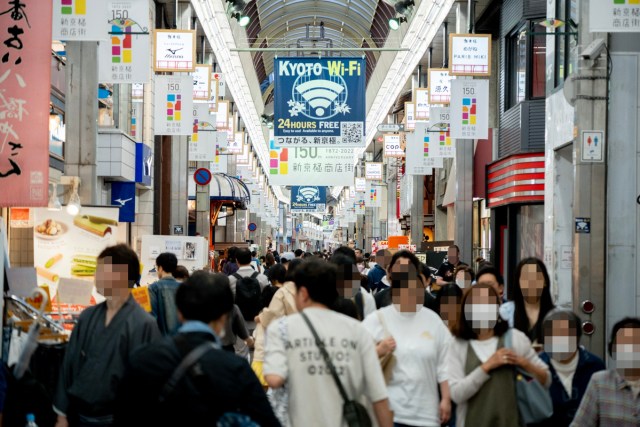
In a city with endless appeal, we found something just as enchanting as traditional culture or ancient structures.
At long last, Tokyo’s relentless heat of the past few months is beginning to lessen and the summer season is coming to a close. Our Japanese-language reporter Tasuku Egawa remembers feeling a bit melancholy around this time of the year while growing up, but these days, he can’t wait for the temperature to drop and hints of fall to start emerging.
At least he has one particularly sweet memory from this past summer–his trip to Kyoto back in June. He’d heard rumors that he’d be able to see something there that’s unconventional for a large city, so he decided to work this little side quest into his travel plans. It definitely wasn’t the kind of sightseeing thing that most tourists would have on their lists, either.
For readers who have never been to Kyoto, parts of the city, such as the downtown area around Kyoto Station, are very urban. In fact, Tasuku didn’t feel that the commercial vibe is all that far off from Tokyo. He began his adventure in such a high-end shopping and dining area with the sprawling Daimaru and Takashimaya Japanese department stores to his west and Leica and Valextra European boutiques to his east. In Tokyo terms, it almost felt like districts such as Nihonbashi, Harajuku, Ginza, and Akasaka were all condensed into one smaller neighborhood. All of the stores coupled with the high influx of tourists currently in the city made this location feel just as busy to him as Shinjuku Station.
▼ The Daimaru department store
Shortly before 8:30 p.m., Tasuku caught a taxi at the Shijo Bridge. It was fun to see the city at night in this manner.
He especially marveled as the car sped past the Kyocera Museum of Art with its colorful illuminations.
His destination was about four kilometers (2.5 miles) away and took ten minutes to get there. Only after paying the fare of 1,700 yen (US$12) did he realize that he could have easily ridden there on a rental bike on his own. Oh well.
The spot where he was dropped off, which was an area along Kyoto’s famed Philosopher’s Walk pedestrian canal pathway, was quite dark. You can only see the signpost in his photo below because of the camera’s flash.
There were some streetlights around, but they were relatively far apart from each other. Shadows encased most of the space between the lights.
This description may make it sound like Tasuku suddenly found himself in the middle of the mountains, but the street he was on was lined with regular houses and stylish cafes. He wasn’t in complete solitude, either, as locals occasionally passed him while walking their dogs or jogging.
Suddenly, he caught sight of a small flicker of light in the darkness, and he knew that his quest had been successful. It was the unmistakable glow of firefly light.
To be precise, these particular fireflies are called genji-botaru in Japanese. They’re registered as a Natural Monument of Kyoto City.
Now, Tasuku had grown up in the mountains and was able to see many fireflies as a child, so it wasn’t a first experience for him in that sense. Rather, what was novel to him was the fact that fireflies still naturally inhabit the area so close to a bustling commercial area, continuing to reproduce and maintaining a stable population without human intervention. He’s not aware of any place in downtown Tokyo where they still thrive naturally, so this phenomenon seems special to Kyoto. In Tokyo, it’s only once you travel 50-60 kilometers away from the heart of the city, to areas like Hachioji and Akiruno, that you might find a self-sustaining population.
Tasuku’s neighborhood also used to be home to fireflies once upon a time, but the rise of munitions factories during World War II and then rapid development as a result of Japan’s postwar economic growth polluted the local drainage ditch so much that they all died out. There have been attempts to reintroduce them to the area for the past 20 years or so, but they always last only one generation before their light completely fades away.
▼ The use of tripods was prohibited in the area, and Tasuku regretted that even his best handheld long exposure shots still came out blurry.
In other words, in modern and urbanized Japan, it can be difficult for fireflies to live near humans. For one, it’s often said that they need a clean source of running water, but in Tasuku’s view, it’s best if the water is just the right balance between clean and dirty. Some other species such as Japanese stoneflies (kawagera) and freshwater crabs (sawagani) definitely need clean water to survive, but genji-botaru fireflies uniquely feed on freshwater snails (kawanina), which prefer muddied water. The water can’t be too pure or too dirty, but needs to be somewhere right in the middle, for the ideal habitat. Unfortunately, humans have a knack for extremes, either purifying the water too much or leaving it unattended long enough that it becomes riddled with garbage and sludge.
Moreover, fireflies hate light more than anything. They communicate and mate by means of their intricately glowing dances in the dark. Conversely, humans love the light and need it to survive. The number of streetlights and cars tends to increase as a local population goes up, which results in driving the fireflies away. Therefore, the fact that he was seeing these magical lights within a developed city sparked nothing but awe in his mind.
As Tasuku walked to Keage Station to catch a train back to his hotel, he saw more and more of the genji-botaru–and not just along the Philosopher’s Walk, either. They wove through the open space on the grounds of Nanzenji Temple and glimmered in the thick vegetation near any water source as an intrinsic part of the local landscape. He was also impressed to see a young man stop his girlfriend from shining her camera light on the fireflies as well as a father scold his children for trying to snatch them from the air. It seems that the residents of Kyoto truly respect and appreciate the amazing natural gift of their city and will do anything to keep that light shining a little bit longer.
All images © SoraNews24
● Want to hear about SoraNews24’s latest articles as soon as they’re published? Follow us on Facebook and Twitter!
[ Read in Japanese ]



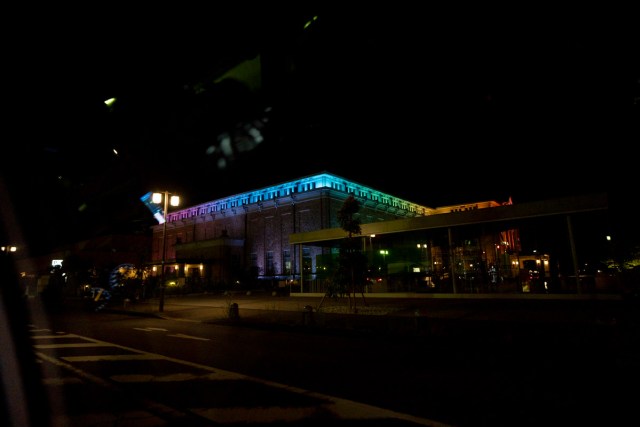
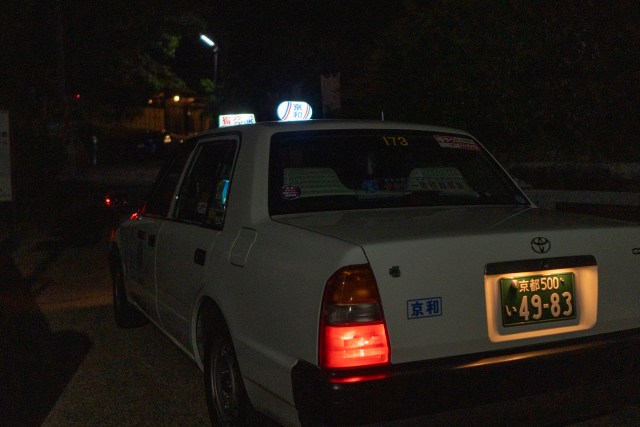

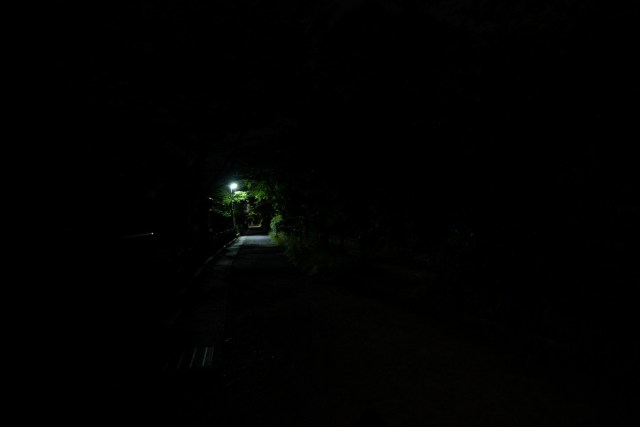
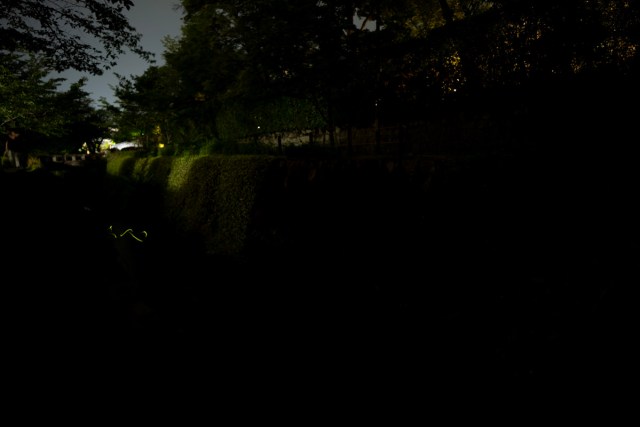
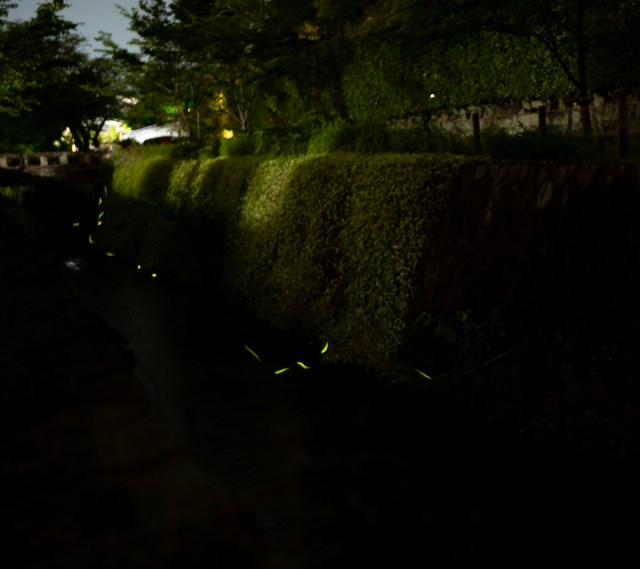
 A first-time visit to Kyoto’s Gion Festival becomes a night to remember
A first-time visit to Kyoto’s Gion Festival becomes a night to remember 1,032 statues, and one thing too many people miss, at this Kyoto temple
1,032 statues, and one thing too many people miss, at this Kyoto temple Eating tuna and parrotfish like the locals on the Amami Islands’ Yoron Island
Eating tuna and parrotfish like the locals on the Amami Islands’ Yoron Island “Hey, Japanese taxi driver, take us to the best bubuzuke in Kyoto!”
“Hey, Japanese taxi driver, take us to the best bubuzuke in Kyoto!” Kyoto in summer: A special trip to Kifune shrine recharges the soul
Kyoto in summer: A special trip to Kifune shrine recharges the soul Starbucks Japan releases new drinkware and goods for Valentine’s Day
Starbucks Japan releases new drinkware and goods for Valentine’s Day We followed Tokyo’s mystery walking map and ended up creating our own bar-hopping adventure
We followed Tokyo’s mystery walking map and ended up creating our own bar-hopping adventure Hokkaido has an Ice Festival that’s less famous than the Snow one, but beautiful in its own way
Hokkaido has an Ice Festival that’s less famous than the Snow one, but beautiful in its own way Japanese women showing rebounding interest in giving Valentine’s Day chocolate【Survey】
Japanese women showing rebounding interest in giving Valentine’s Day chocolate【Survey】 Starbucks Japan releases new Frappuccino and latte for Valentine’s Day
Starbucks Japan releases new Frappuccino and latte for Valentine’s Day What’s inside Starbucks Japan’s fukubukuro lucky bag for 2026?
What’s inside Starbucks Japan’s fukubukuro lucky bag for 2026? Man arrested for violating Japan’s anti-dueling law in downtown Tokyo
Man arrested for violating Japan’s anti-dueling law in downtown Tokyo Giant hotel rooms in Osaka reflect the new non-niche face of travel in Japan.
Giant hotel rooms in Osaka reflect the new non-niche face of travel in Japan. Ramen restaurant’s English menu prices are nearly double its Japanese ones, denies discriminating
Ramen restaurant’s English menu prices are nearly double its Japanese ones, denies discriminating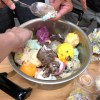 We mixed all 31 flavors of Baskin Robbins ice cream and created a Frankenstein dessert【Video】
We mixed all 31 flavors of Baskin Robbins ice cream and created a Frankenstein dessert【Video】 10 times to avoid traveling in Japan in 2026
10 times to avoid traveling in Japan in 2026 Our 52-year-old pole dancing reporter shares his tips for achieving your New Year’s exercise goal
Our 52-year-old pole dancing reporter shares his tips for achieving your New Year’s exercise goal Umamusume anime girl plushie recalled for having parts she absolutely should not have【Pics】
Umamusume anime girl plushie recalled for having parts she absolutely should not have【Pics】 Princess Mononoke magnets return just in time to treat yourself to awesome anime decorations
Princess Mononoke magnets return just in time to treat yourself to awesome anime decorations Top Japanese cosplayer Enako returns to Comiket after 6 years, creates mayhem with admirers
Top Japanese cosplayer Enako returns to Comiket after 6 years, creates mayhem with admirers We ate sushi made from Japan’s most expensive tuna ever【Taste test】
We ate sushi made from Japan’s most expensive tuna ever【Taste test】 Japanese beef bowl chain Sukiya’s 2026 Smile Box lucky bag basically pays for itself
Japanese beef bowl chain Sukiya’s 2026 Smile Box lucky bag basically pays for itself Starbucks Japan ready to get Year of the Horse started with adorable drinkware and plushies【Pics】
Starbucks Japan ready to get Year of the Horse started with adorable drinkware and plushies【Pics】 7-Eleven Japan starts new temporary luggage storage service in over 300 branches
7-Eleven Japan starts new temporary luggage storage service in over 300 branches Disillusionment at Tsukiji’s tourist-target prices led us to a great ramen restaurant in Tokyo
Disillusionment at Tsukiji’s tourist-target prices led us to a great ramen restaurant in Tokyo Starbucks teams up with 166-year-old Kyoto doll maker for Year of the Horse decorations【Photos】
Starbucks teams up with 166-year-old Kyoto doll maker for Year of the Horse decorations【Photos】 Tokyo’s Tsukiji sushi neighborhood asks tour groups to stay away for the rest of the month
Tokyo’s Tsukiji sushi neighborhood asks tour groups to stay away for the rest of the month Japan may add Japanese language proficiency, lifestyle classes to permanent foreign resident requirements
Japan may add Japanese language proficiency, lifestyle classes to permanent foreign resident requirements Survey asks foreign tourists what bothered them in Japan, more than half gave same answer
Survey asks foreign tourists what bothered them in Japan, more than half gave same answer Japan’s human washing machines will go on sale to general public, demos to be held in Tokyo
Japan’s human washing machines will go on sale to general public, demos to be held in Tokyo We deeply regret going into this tunnel on our walk in the mountains of Japan
We deeply regret going into this tunnel on our walk in the mountains of Japan Studio Ghibli releases Kodama forest spirits from Princess Mononoke to light up your home
Studio Ghibli releases Kodama forest spirits from Princess Mononoke to light up your home Major Japanese hotel chain says reservations via overseas booking sites may not be valid
Major Japanese hotel chain says reservations via overseas booking sites may not be valid Put sesame oil in your coffee? Japanese maker says it’s the best way to start your day【Taste test】
Put sesame oil in your coffee? Japanese maker says it’s the best way to start your day【Taste test】 No more using real katana for tourism activities, Japan’s National Police Agency says
No more using real katana for tourism activities, Japan’s National Police Agency says Starbucks Japan reveals new sakura drinkware collection, inspired by evening cherry blossoms
Starbucks Japan reveals new sakura drinkware collection, inspired by evening cherry blossoms Updated cherry blossom forecast shows extra-long sakura season for Japan this year
Updated cherry blossom forecast shows extra-long sakura season for Japan this year Human washing machine pods coming to Japanese hotels【Photos】
Human washing machine pods coming to Japanese hotels【Photos】 The number of tourists was declining in this Japanese city, but Ono is now making its comeback
The number of tourists was declining in this Japanese city, but Ono is now making its comeback We travel across the city like royalty — Hiroshima streetcar turns into fancy, private dining area
We travel across the city like royalty — Hiroshima streetcar turns into fancy, private dining area Escape the Kyoto crowds at these lesser-known spots in Arashiyama
Escape the Kyoto crowds at these lesser-known spots in Arashiyama Kyoto sightseeing tour: The most amazing old bathhouses in the city
Kyoto sightseeing tour: The most amazing old bathhouses in the city Japan’s robot dinosaur population continues to grow with new addition at Fukui Station
Japan’s robot dinosaur population continues to grow with new addition at Fukui Station Kyoto sightseeing tour: exclusive temple tours, meditation lessons, and incense making
Kyoto sightseeing tour: exclusive temple tours, meditation lessons, and incense making No-bus Kyoto sightseeing! SoraNews24’s ultimate on-foot guide for Japan’s former capital【Part 3】
No-bus Kyoto sightseeing! SoraNews24’s ultimate on-foot guide for Japan’s former capital【Part 3】 Beautiful Starbucks in Kyoto blends into its traditional landscape in more ways than one
Beautiful Starbucks in Kyoto blends into its traditional landscape in more ways than one Promotional event convinces us Kyoto’s Uji City is an area worth both exploring and tasting!
Promotional event convinces us Kyoto’s Uji City is an area worth both exploring and tasting! Is Kyoto less crowded with tourists after China’s don’t-go-to-Japan warning?【Photos】
Is Kyoto less crowded with tourists after China’s don’t-go-to-Japan warning?【Photos】 How to pick out the best anago eel and other things we learned at the anago processing center
How to pick out the best anago eel and other things we learned at the anago processing center Kyoto luxury just off the beaten path at Maruyama Park’s Chourakukan【Photos】
Kyoto luxury just off the beaten path at Maruyama Park’s Chourakukan【Photos】 We take a giraffe nap in a standing sleep pod at a cafe in Tokyo
We take a giraffe nap in a standing sleep pod at a cafe in Tokyo Toei Kyoto Studio Park takes you back in time to Edo period Japan, but all is not what it seems
Toei Kyoto Studio Park takes you back in time to Edo period Japan, but all is not what it seems Has Kyoto Prefecture’s super spicy food area still got the heat, or has it sizzled out?
Has Kyoto Prefecture’s super spicy food area still got the heat, or has it sizzled out?
Leave a Reply